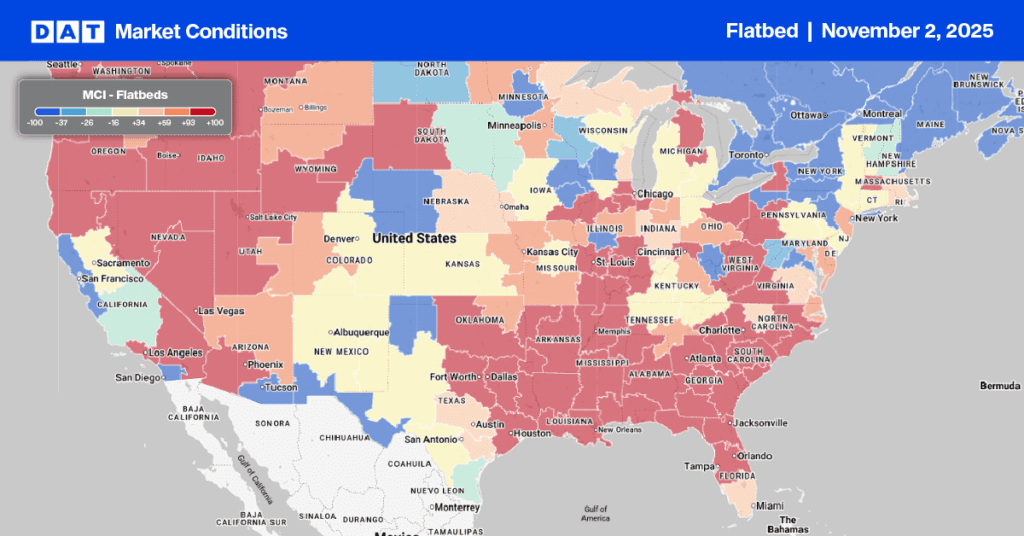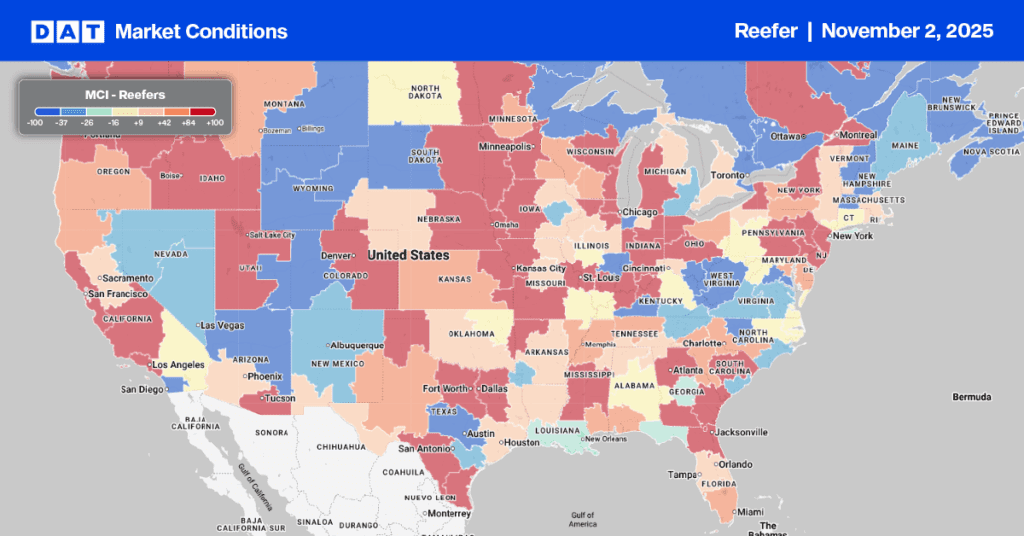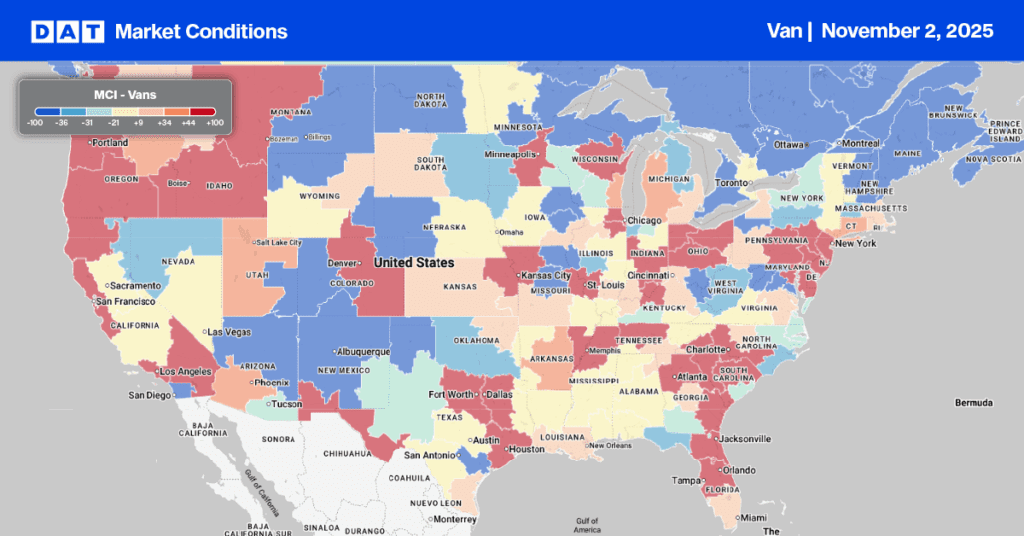Fear mongering in recent weeks and talks of a “freight recession” have sent freight markets and sections of the media into a spin – like the dimwitted Chicken Little character did when he warned farmyard animals the sky was falling when an acorn fell on his head in the 1940s Disney Movie. Since then, the term “the sky is falling” has generally been accepted as an idiom suggesting that disaster is imminent, and while that may well be the case for some in the trucking industry, we’re far from a disaster.
The current downward trend in national average spot rates and rapidly loosening capacity isn’t a blip either. If you’re an owner-operator invested heavily in the dry van or reefer spot market, it sure feels like the sky is falling. The reality for most is that we’re seeing an overheated market correction where demand appears to be reverting to more seasonal levels as more capacity becomes available. This is very much the case in the refrigerated produce sector, where March monthly truckload volumes are on par with the same month in previous non-pandemic years.
Get the clearest, most accurate view of the truckload marketplace with data from DAT iQ.
Tune into DAT iQ Live, live on YouTube or LinkedIn, 10am ET every Tuesday.
After jumping 37% y/y in 2020 as the pandemic took hold, produce volumes soared as more consumers ordered more fresh fruit and vegetables online and cooked more meals at home. Fast-forward to March 2022, and we see volumes down 22% y/y as consumers head back to the office and out to a restaurant. Monthly produce volumes are still around 14% higher than in non-pandemic years, so even though they appear to be dropping rapidly compared to the highs of the last two years, they are, in fact, closer to what we’d typically expect for this time of the year.
Even though the threat of a freight recession remains a risk, for the time being, demand remains strong for truckload carriers. In the dry van sector demand, as measured by the Michigan State University For-Hire Trucking Ton-Mile Index, January and February were solid months, with ton miles at the end of 2021 up close to 4.5% above 2018 levels and 6.5% above February 2019 (3-year comp). The recent report from CASS Information Systems for March has truckload shipments up just 0.6% y/y following a 2.7% m/m increase. The ATA Truckload Index representing the heavy side of the contract shipping market has tonnage up 2.4% y/y after being relatively flat in February.
So if we assume for a minute that truckload demand is flat to slightly higher than in previous years, the bigger problem is the rapid loosening in capacity as more trucks become available to meet current demand. DAT has contended there have always been enough trucks to meet demand; it was just that they weren’t cycling through freight networks at the same rate we’d typically expect. Having trucks and drivers held up on labor-starved docks resulted in higher dwell times and lower network velocity, creating the impression that capacity was tight. The same applied to shippers who made demand appear artificially higher by shipping more partial loads, so they were on time with customer deliveries.
As shippers start to consolidate multiple shipments into fewer full truckloads rather than shipping whatever was on the dock as soon as possible, demand is returning to more seasonal levels. On the flip side, as trucks started to move through freight networks faster as labor returned to the market and Covid workplace restrictions eased, capacity loosened, and talk of the driver shortage disappeared. We’ve always had enough trucks and drivers, but as is the case when the market turns, we’re now seeing too many trucks competing for loads, driving down spot rates in the process.
The recent decline in truckload spot rates doesn’t apply across the entire truckload market: Flatbed rates are increasing as we head into peak construction season, and we’re at the starting line of the 2022 produce season. Even though spot rates have dropped from unusually high levels and are now down $0.55/mile since January this year, we expect rates to bottom out shortly at levels just above break-even for most small carriers.
Given record-high fuel costs and inflation, it’s far from ideal, but the sky isn’t falling either.


